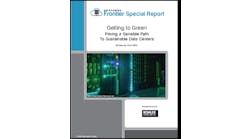Google has confirmed plans to build two new data centers in central Ohio, adding campuses in Columbus and Lancaster to expand on its initial project in New Albany. The additional facilities will bring Google's investment in its Ohio cloud region to more than $2 billion.
"Data centers like these are critical to Google's future investment in cloud and artificial intelligence," said Mark Isakowitz, Vice President, Government Affairs & Public Policy for Google, "Once these campuses are completed, they will continue to power not only AI innovations, but the tools you use everyday like search, email and maps."
Ohio is home to a Google Cloud Platform (GCP) region, which allows GCP users to specify the placement of their cloud infrastructure, enabling faster service in a given location
Google broke ground on its New Albany data center in 2019, and last year purchased 618 acres of property for additional sites, including 500 acres in Columbus and about 120 acres in Lancaster.
The investments represent more growth for the cloud cluster in the Columbus suburbs, which is home to large campuses for Google, Facebook and Amazon Web Services as well as commercial data centers from Cologix, Compass Datacenters, Iron Mountain and STACK Infrastructure.
Intel recently unveiled plans to invest $20 billion to create two cutting-edge chip factories in New Albany to meet the surging demand for advanced semiconductors. The Intel “mega-site” outside Columbus spans 1,000 acres and can accommodate a total of eight chip factories – also known as “fabs” – as well as support operations and ecosystem partners.
“Ohio is a growing technology hub and data center market, and we welcome these two new Google projects in Columbus and Lancaster to complement the one already in New Albany,” said Ohio Governor Mike DeWine.
As the Internet cloud builders seek to distribute large files to support videos, gaming and virtual reality, the center of the country is proving to be the ideal place to add data center capacity. Placing data centers in places like Ohio and Iowa makes it easier to distribute content to major markets like Chicago and Dallas, reducing lag and buffering for streaming media like Netflix movies or Facebook videos. It also allows for data to move quickly to either coast, which can be important in application development.
Google has been on the bleeding edge of data center technology, customizing nearly every element of its operations, from processors to building design. Google has recently shifted to liquid cooling with its latest hardware for artificial intelligence, as the heat generated by its new Tensor Processing Units (TPUs) has exceeded the limits of its previous data center cooling solutions.






